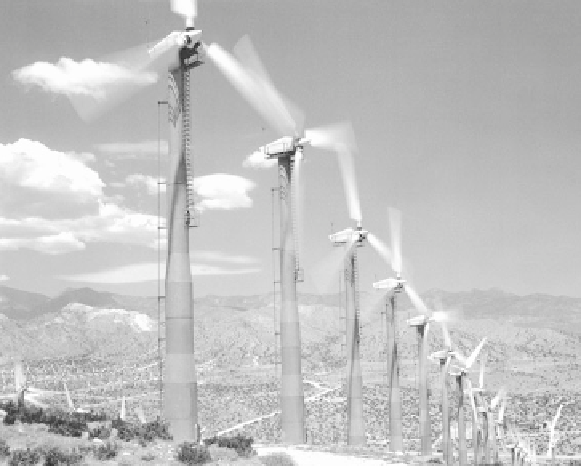Environmental Engineering Reference
In-Depth Information
Figure 7.20
A row of wind turbines at a wind farm in Palm Springs, California (US). (By permission of
DOE/NREL-PIX.)
not easily accessible site, in an unsheltered and sometimes hostile environment, presents practical
difficulties that may lead lead to high operating costs.
Wind turbines often drive induction generators as the source of electrical power. Because
induction generators operate at near synchronous speed when supplying 60-cycle power to an
electric grid, the turbine speed is held constant over its load range, thereby operating at less-than-
optimum efficiency at low and high speeds. A more efficient match between the wind turbine and
electric generator is possible if the turbine and generator speed can be varied with the wind speed,
but this requires conversion of the AC generator output to DC and then back to 60-cycle AC, which
may be less economical despite the improved turbine efficiency.
7.6.1
Environmental Effects
There are several environmental drawbacks of wind energy systems. Wind turbines generate audible
noise, somewhat akin to that of helicopters, but much less intense because of their much lower
power levels. Nevertheless, wind turbines are unwelcome noisy neighbors in populated areas but
have no adverse effect on livestock operations. They can, however, kill migrating birds that attempt
to fly through the turbine. To some observers they provide visual blight, especially if located in
otherwise undeveloped natural areas.
7.7
TIDAL POWER
The regular rise and fall of the ocean level at continental margins has been used in past centuries to
produce mechanical power for grinding grain or sawing wood by damming water in coves or river

